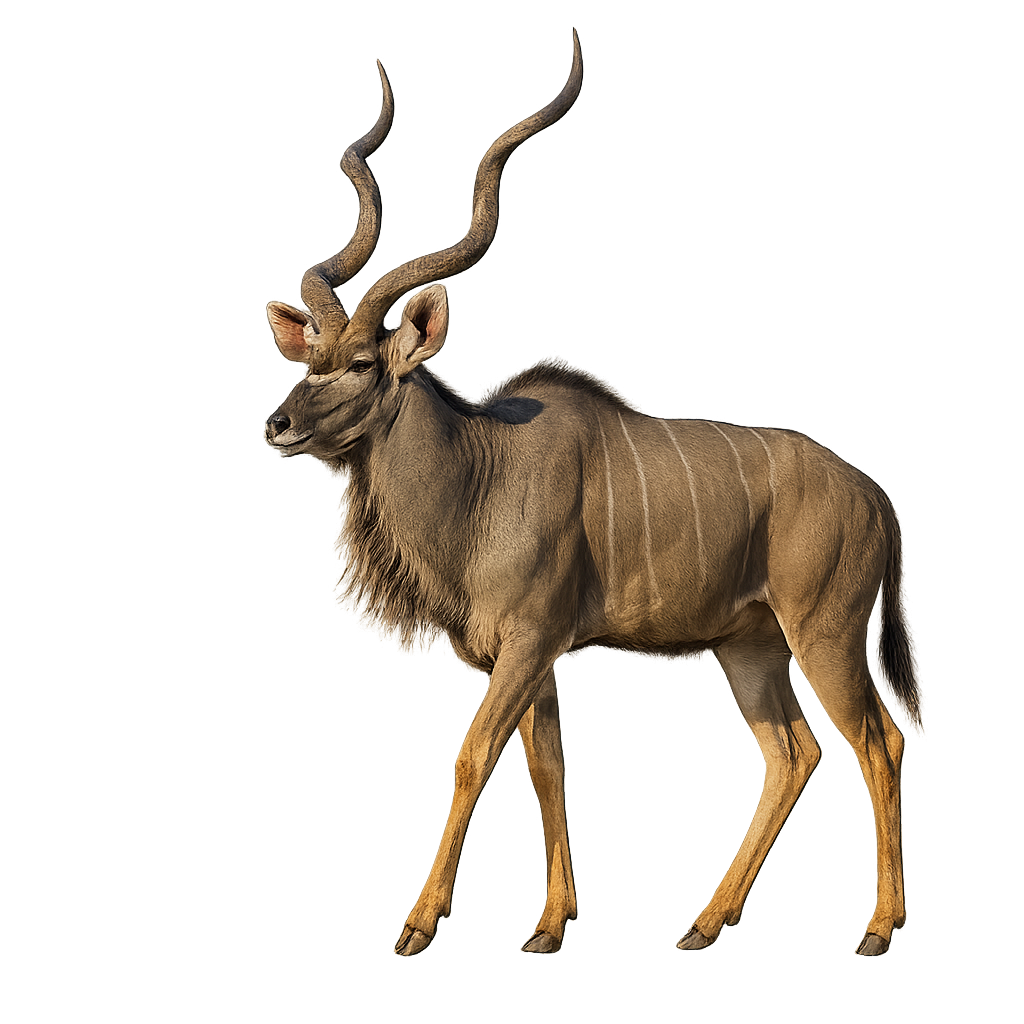Observe and photograph a species in its natural habitat
Learn where and when to observe a species in the wild, how to recognize it in the field, and what habitats it lives in. Get photography tips adapted to its behavior and capture stunning images without disturbing the animal. For full details, open the complete profile in the WildlifePhotographer app.
Greater Kudu
Scientific name: Tragelaphus strepsiceros

IUCN Status: Least Concern
Family: BOVIDAE
Group: Mammals
Shyness: Suspicious
Safe distance: 50 m
Breeding season / Courtship: 15.05-15.08
Gestation: 240 jours
Births: 15.02-15.04
Habitat:
Savanna and open forests
Description:
The Greater Kudu is an elegant, large antelope, easily recognized by its long, slender legs, streamlined body, and impressive spiral-shaped horns. It stands between 1.3 and 1.6 meters at the withers, with males weighing between 190 and 270 kg, and females weighing between 120 and 180 kg. Its coat is light gray to brown, with vertical white stripes on the body, which help it blend into forests and savannas. Males have long, spiral-shaped horns that can reach up to 1.5 meters in length, while females lack horns. The Greater Kudu primarily inhabits open forests, wooded areas, and savannas of sub-Saharan Africa, notably in East and Southern Africa. Herbivorous, it feeds mainly on leaves, bark, and fruits. This antelope is rather discreet and shy, typically living alone or in small family groups. While it is not currently in immediate danger, the Greater Kudu is threatened by habitat loss and hunting.
Recommended lens:
>=300 mm
Photography tips:
Approach slowly and quietly, using a telephoto lens to capture images from a distance. The greater kudu is discreet and often hides in dense bushes or woodlands.
Photograph early in the morning or late afternoon, when soft light highlights its movements or feeding behavior.
Observe it alone or in small groups, waiting for calm moments in its natural habitat to take authentic photos.
Be patient and respectful—avoid disrupting its natural behavior.
IUCN status: Least Concern. Respect its environment and follow local conservation rules.
Ready to take action?
Choose your platform and start your free trial today



